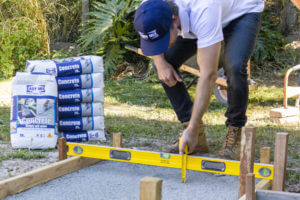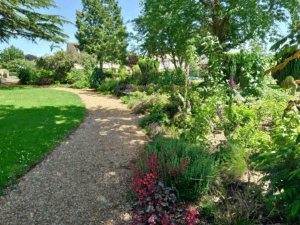2 simple steps to add when installing pavers
Dreaming of the perfect paved pathway or entertainment area, but don’t want to be out there weeding every other day? We all know how amazingly resilient weeds can be, and they can grow almost anywhere, even in the worst conditions. The good news is, there are steps you can take to reduce the likelihood of ugly weeds and pesky infestations of ants.
Let’s turn that dream into a reality. Our method for preventing ants and weeds between your pavers has 2 simple steps that can be incorporated into the procedure for installing your paver patio.
1. Lay a compacted foundation underneath the pavers.
After excavation of the area, it is ideal to lay a level of Easy Mix Crushed Bluestone and compact it. Followed by a layer of bedding sand which is also compacted. Not only will this foundation provide a level and stable surface for the pavers to be installed, but it is also the first line of defence against weeds and ants. By creating a compacted foundation, you are making it difficult for weeds to root and grow, plus a hard surface makes it hard for ants to tunnel through.
Laying your pavers on dirt is an open invitation for all manner of crawling creatures and weeds to set up home underneath and between your pavers. Plus, it causes more work for you in the future as pavers are lifted/shifted out of place requiring maintenance to put back into place.
If you want to increase the guarantee of not having weeds breaking through your foundation layer, prior to excavation, sprinkle/spread a grass poison on the paving area. If done 2 weeks prior, it provides ample time for the poison to do its work and kill any lingering roots. Then you can excavate the area and lay your compacted foundation.
2. Use proper paver joining sand
Using a sand that is a polymeric blend provides the necessary joining structure which is formed when wet. As the sand sets, it creates a strong, hard barrier for ants to tunnel up in and for weeds to penetrate. It’s not a guarantee that this type of sand will stop all ants and weeds, however, it is a huge deterrent. Using any other type of sand is an open invitation for both parties to burrow in and set up home amongst your pavers and wreck havoc.
Wondering what polymeric sand is? It is a blend of sand and polymer additives that are activated when wet creating a hard sand that locks pavers together. It’s known for being durable and staying together during rain. Although the sand hardens and makes it difficult for ants and weeds to reach the surface, it is also relatively flexible to prevent cracking in the surface.
When you combine these steps together, you’ll be installing the best defence against weeds and ants. If you need that extra protection against your paver’s enemies, adding in the step to poison the grass roots will certainly assist.
Enjoy a hassle-free summer with these paving tips. Want to learn more about laying pavers in your backyard? Read our DIY article or watch the video here.




